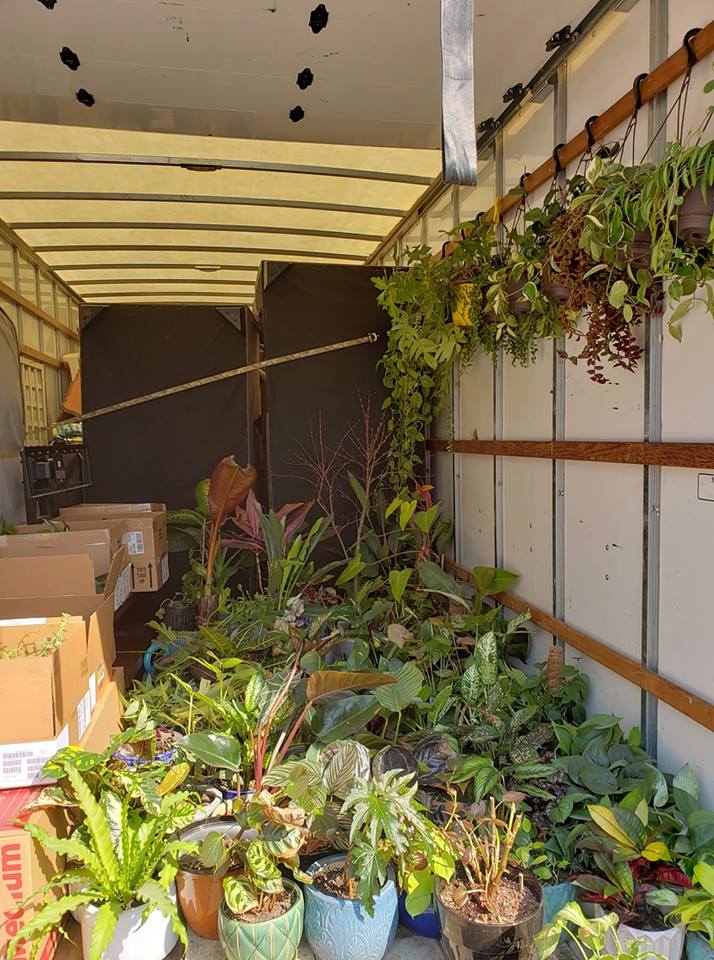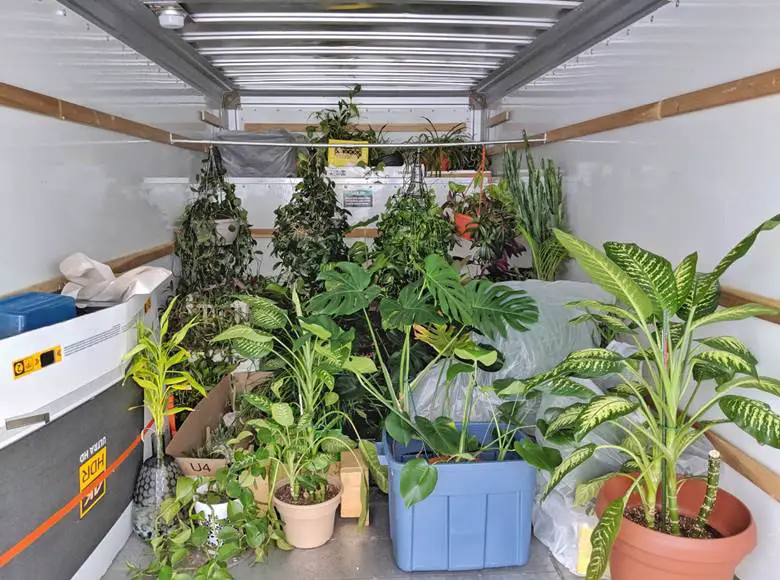Best way to move house plants across the country is to use proper packing techniques and ensure they are well-hydrated. Moving house plants across the country can be challenging.
Ensuring they arrive in good condition requires careful planning. Start by assessing which plants are suitable for the journey. Some plants may not survive long-distance travel. Use sturdy boxes with ventilation holes for packing. Secure the pots to prevent movement during transport.
Keep the soil moist but not overly wet. If moving in winter, protect plants from cold temperatures. Label boxes clearly to avoid mishandling. Consider transporting delicate plants in your vehicle. Upon arrival, unpack plants immediately and place them in a suitable environment. Taking these steps will help ensure your house plants thrive in their new home.
Preparing Your Plants
Moving house plants across the country can be challenging. Proper preparation ensures they arrive healthy. Here are some essential steps for preparing your plants for the move.
Inspect For Health
First, check each plant for pests or diseases. This helps prevent spreading issues to new plants. Remove any visible pests by hand or use a pesticide.
- Check leaves: Look for spots or discoloration.
- Inspect soil: Ensure it is free of insects.
- Examine stems: Look for signs of rot or damage.
If a plant looks unhealthy, consider leaving it behind. Healthy plants have a better chance of surviving the move.
Prune And Trim
Pruning and trimming help plants handle the stress of moving. Remove dead or yellowing leaves. Trim overgrown branches to reduce size.
- Use clean tools: Clean pruning shears with alcohol.
- Remove dead parts: Cut off dead or diseased leaves.
- Shape the plant: Trim branches to maintain a compact size.
Pruned plants use less water and nutrients, making them easier to transport. Regular pruning also promotes new growth after the move.

Credit: www.reddit.com
Choosing The Right Containers
Moving house plants across the country can be challenging. The key to a successful move is choosing the right containers. The right container ensures your plants stay healthy and secure during the journey.
Types Of Containers
There are several types of containers to consider:
- Plastic Pots: Lightweight and less likely to break.
- Clay Pots: Heavier, but provide good stability.
- Fabric Pots: Flexible and breathable for roots.
- Wooden Crates: Sturdy and offer good protection.
- Cardboard Boxes: Easy to find and disposable.
Securing Plants In Containers
Securing plants is crucial to avoid damage. Follow these steps:
- Wrap the Plant: Use bubble wrap or old newspapers.
- Fill Gaps: Add packing peanuts or crumpled paper.
- Secure the Pot: Use tape to fix the pot to the container.
- Label the Container: Mark with “Fragile” and “This Side Up”.
Using these methods, you will ensure your plants arrive safely at your new home.
Watering Before The Move
Watering house plants before a big move can be tricky. Proper hydration is key, but timing and method matter. Let’s dive into the best practices for watering your plants before the move.
Timing The Last Watering
Plan your last watering session carefully. Water your plants two days before moving. This gives the soil time to drain excess water. This avoids soggy soil during transport.
Avoiding Overwatering
Overwatering can harm your plants during a move. Soggy soil can lead to root rot. Follow these simple steps:
- Use a moisture meter to check soil moisture levels.
- Water plants lightly instead of soaking them.
- Ensure pots have proper drainage holes.
Stick to these guidelines to keep your plants healthy during the journey. Proper hydration ensures your plants arrive in top shape.

Credit: www.reddit.com
Packing Plants Safely
Moving house plants across the country can be challenging. Ensuring they arrive safely is crucial. Proper packing is key to keeping your plants healthy. Let’s explore the best ways to pack plants securely.
Using Packing Materials
Use the right materials to protect your plants. Bubble wrap, packing paper, and sturdy boxes are essential. Wrap the plant pots in bubble wrap to prevent breakage. Use packing paper to fill gaps in the box. This keeps the plant from moving around.
For tall plants, use long, narrow boxes. Support stems with stakes or poles. Avoid using plastic bags. They can trap moisture and harm the plant. Ensure all materials are clean and dry to avoid mold.
Labeling Boxes
Labeling boxes is crucial for safe transport. Mark each box with “Live Plants” and “Fragile.” This alerts movers to handle with care. Include arrows to indicate which side should stay up.
Use bold markers for clear visibility. Write in large, legible letters. Add specific care instructions if needed. For example, “Water daily” or “Keep in shade.” This helps ensure the plants receive proper care during the move.
Climate Considerations
Moving house plants across the country can be tricky. One of the most important factors to consider is the climate. Plants are sensitive to changes in their environment. Understanding the climate needs of your plants will help them survive the journey.
Temperature Control
Temperature is crucial for your house plants. Extreme temperatures can harm them. Aim to keep the temperature between 60-75°F. Use a climate-controlled vehicle if possible. This helps maintain a stable temperature.
Consider using thermal blankets. These can protect your plants from cold or heat. Wrap the plants carefully but not too tightly. This will allow them to breathe.
Humidity Levels
Humidity is another important factor. Most house plants thrive in 40-60% humidity. Too much or too little can stress the plants. Use a portable humidifier if the air is too dry. This will help maintain the right humidity levels.
For added protection, place the plants in a plastic bag. This can create a mini greenhouse effect. Make sure to leave some air holes for ventilation.
| Climate Considerations | Recommended Actions |
|---|---|
| Temperature Control | Use thermal blankets and climate-controlled vehicles. |
| Humidity Levels | Use portable humidifiers and plastic bags with air holes. |

Credit: plantaddicts.com
Transporting Your Plants
Moving house plants across the country requires proper planning. Ensuring your plants arrive healthy is key. Below are steps to prepare and secure your plants during the move.
Vehicle Preparation
Prepare your vehicle to transport plants safely. Clean the car to remove any debris. Ensure the interior is at a stable temperature. Extreme heat or cold can harm plants.
Use a thermometer to monitor the temperature. Keep the car at around 70°F (21°C). Avoid placing plants in the trunk. It can get too hot or cold there.
Arrange seats to create space for plants. Use blankets or towels to cushion the area. This prevents pots from moving during the drive.
Securing Plants In Transit
Secure plants to prevent them from tipping over. Use seat belts to hold larger pots in place. For smaller plants, use boxes with holes for air circulation.
Place the heaviest plants on the floor. This adds stability and reduces the risk of falling. Use bungee cords to secure plants if needed.
Keep plants out of direct sunlight. It can cause overheating and damage leaves. Use a sunshade on car windows for protection.
Water plants lightly before the trip. Overwatering can cause spills and root rot. Check plants regularly during rest stops.
| Action | Reason |
|---|---|
| Clean the car | Remove debris and pests |
| Monitor temperature | Keep plants at 70°F (21°C) |
| Use seat belts | Prevent pots from tipping |
| Water lightly | Prevent spills and root rot |
- Clean the car interior.
- Monitor the temperature.
- Secure plants with seat belts.
- Water plants lightly.
Following these steps helps ensure a safe journey for your plants. Happy moving!
Unpacking And Settling In
Moving house plants across the country can be stressful. They need special care once they arrive at their new home. This section will guide you through unpacking and settling in your plants. Follow these steps to ensure they thrive in their new environment.
Immediate Care
Once your plants arrive, unpack them right away. Check each plant for damage. Remove any broken leaves or stems.
- Place the plants in a shaded area initially.
- Water them lightly to help them recover from the move.
- Inspect the soil moisture. Adjust watering as needed.
Immediate care ensures your plants start adjusting to their new home. Light watering helps them regain strength.
Gradual Acclimatization
Plants need time to adjust to a new environment. Gradually introduce them to their new surroundings.
- Keep them in indirect light for a few days.
- Slowly move them to their permanent spot.
- Monitor their response to the new light levels.
This step-by-step approach prevents shock and helps plants thrive. Monitoring is crucial to ensure they adapt well.
Use this table to keep track of your plants’ acclimatization process:
| Day | Light Exposure | Plant Response |
|---|---|---|
| 1-3 | Indirect Light | Monitor health |
| 4-6 | Gradual Sunlight | Check for stress signs |
| 7+ | Permanent Spot | Adjust care if needed |
Following these steps ensures your plants settle in smoothly. Happy plants make a happy home!
Post-move Plant Care
Moving house plants across the country is a challenging task. But, ensuring their well-being after the move is equally important. This section provides essential tips for post-move plant care. Follow these simple steps to keep your plants healthy and thriving in their new home.
Monitoring Plant Health
After relocating your plants, check their health immediately. Look for any signs of stress or damage. Common indicators include yellowing leaves, wilting, or drooping. If you notice any issues, take action quickly to help your plants recover.
To track their health, create a simple checklist:
- Check leaves for yellowing or browning
- Inspect stems for breaks or bruises
- Observe soil moisture levels
- Look for pests or insects
Watering And Feeding
Proper watering is crucial after a move. Water your plants as needed, but avoid over-watering. Over-watering can lead to root rot. Check the soil moisture before watering. Use your finger to test the top inch of soil. If it feels dry, it’s time to water.
Feeding your plants is also important. Use a balanced fertilizer to provide essential nutrients. Follow the instructions on the fertilizer package. Do not overfeed, as it can harm your plants.
| Plant Type | Watering Frequency | Fertilizer Type |
|---|---|---|
| Succulents | Every 2 weeks | Cacti fertilizer |
| Ferns | Twice a week | General houseplant fertilizer |
| Flowering Plants | Once a week | Bloom booster |
Remember to keep an eye on your plants regularly. Adjust their care routine as needed. With proper post-move care, your plants will thrive in their new environment.
Frequently Asked Questions
How To Move House Plants Long Distance?
Pack house plants in sturdy boxes with cushioning. Water them lightly. Keep them in a climate-controlled environment. Label boxes clearly. Unpack and water immediately upon arrival.
Can You Move House Plants Across The Country?
Yes, you can move house plants across the country. Ensure they’re well-packed, watered, and protected from extreme temperatures. Check local regulations for plant transport.
How Do You Move Plants Across The Country In A Car?
Secure plants in sturdy boxes. Ensure proper ventilation. Water them lightly before the trip. Avoid direct sunlight. Drive carefully to minimize stress.
How Long Can Plants Survive In A Moving Truck?
Plants can survive in a moving truck for up to 48 hours. Ensure proper ventilation and moderate temperatures for best results.
Conclusion
Moving house plants across the country can be stress-free with proper preparation. Choose sturdy containers and ensure adequate hydration. Secure plants in your vehicle to prevent damage. By following these tips, your beloved plants will thrive in their new home.
Happy moving!

My mission is to help you bring the beauty of nature indoors with expert advice, detailed plant care guides, and creative design ideas.





Leave a Reply